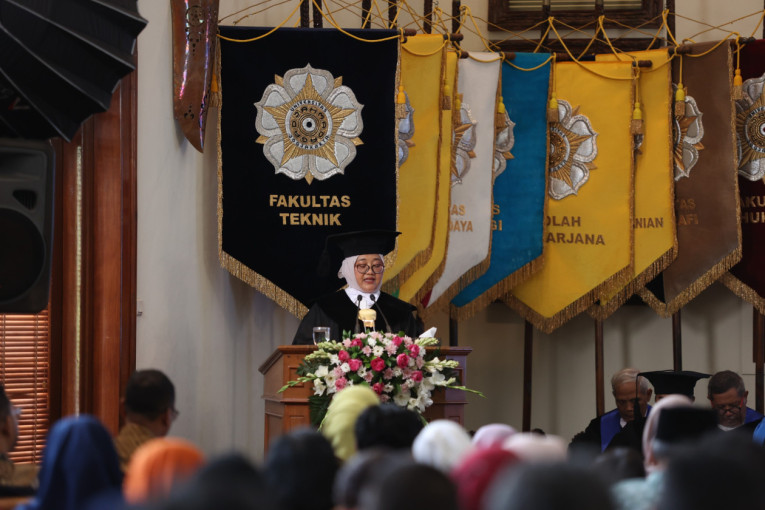
Universitas Gadjah Mada (UGM) proudly heralds the groundbreaking milestone of having the first-ever female professor in physical geodesy.
The esteemed Professor Leni Sophia Heliani was officially inaugurated as a professor in physical geodesy at the UGM Faculty of Engineering. This event unfolded on Tuesday (Jan. 16) at the UGM Senate Hall, where she delivered an inaugural address titled “Physical Geodesy in Optimizing the Provision of Basic Geospatial Information as a Reference for Sustainable Development.”
With this inauguration, Professor Heliani now stands as the first and solitary female professor specializing in physical geodesy throughout Indonesia. In this field, her counterpart is only Professor Joenil Kahar from Bandung Institute of Technology.
Adding to this achievement, this 53-year-old luminary hailing from Garut becomes the second professor of geodesy at UGM. The journey commenced with the inauguration of Professor Trias Aditya Kurniawan Muhammad, who assumed the mantle as the first geodesy professor at UGM on Jan. 17, 2023.
Professor Heliani expressed her gratitude, stating, “The achievement of becoming a professor in the Department of Geodetic Engineering at the Faculty of Engineering is fundamentally the will of Allah SWT and the support and assistance from various parties that are very commendable.”
Physical geodesy centers on portraying the Earth’s physical shape and dimensions, along with their temporal variations, grounded in gravity data. Determining the geoid is pivotal in physical geodesy, aligning with Earth’s dynamics based on gravity data.
The geoid, functioning as a geopotential surface, encapsulates the Earth’s mass distribution, serving as an ideal and tangible reference surface.
The professor emphasized that sustainable development necessitates top-tier, precise, coherent, and integrated data and information. High-level data and information, she affirmed, could be actualized by referencing an accurate, seamless, and consistent geoid encompassing the entire Indonesian archipelago.
Highlighting the hurdles posed by geographic and geological nuances, coupled with challenges in data availability, procurement, management, and evolving methodologies, Professor Heliani underscored the urgency of innovation, integration, and collaboration among all stakeholders in crafting Indonesia’s geoid.
The envisioned geoid development aspired to be accurate, seamless, consistent, and recent, aligned with Indonesia’s geodynamic intricacies, thereby implementing it as a national survey and mapping vertical reference system.
Professor Heliani envisioned that numerous theoretical and practical problems could be simultaneously addressed by precisely defining the national geoid.
This would optimize and synchronize all 3D measurement outcomes from diverse terrestrial and extraterrestrial measurement techniques. Further, through concerted efforts to establish a seamless geoid encompassing land and sea, surveying, mapping, and developmental initiatives in dynamic coastal regions could harmonize terrestrial and marine domains.
This harmonization could be achieved by adopting a consistent 3D reference surface, embracing horizontal and vertical dimensions.
“The science of physical geodesy, with its core focus, must be fortified and evolved within the domain of geodetic-geomatics engineering,” she asserted.
Author: Ika
Photographer: Donnie

